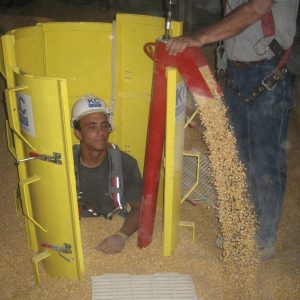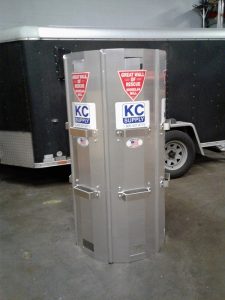
Explosion-proof lighting is an integral part of any facility that works with any potentially explosive materials. Without EPL, there is a chance that any small spark from the lighting fixtures can trigger a catastrophic failure costing lives and money. However, just choosing any EPL will not do either. Because conditions can vary from one place to another, a system of classes and divisions has been created to help you choose the right lighting you need.
There are three main classes to be aware of: class I, class II, and class III. Within each class, there are two divisions. To help you out, here are all the classes and divisions of explosion-proof lighting, and what they are for.
- Class I, Division 1 – These lights are used when the workplace atmosphere has ignitable concentrations of hazardous vapors, gases, and liquids continuously, or even frequently.
- Class I, Division 2 – CI D2 lighting is used when the atmosphere in the workplace has ignitable concentrations of these hazardous vapors, gases, and liquids under any abnormal working conditions.
- Class II, Division 1 – If under normal working conditions, the area’s atmosphere has ignitable levels of combustible dust, then the class II division 1 lights are used.
- Class II, Division 2 – These lights are used instead of the class II division 1 explosion proof lighting if the ignitable levels of combustible dust only exist in abnormal working conditions.
- Class III, Division 1 – If under normal operating conditions, combustible particles from flammable fibers or materials are present in the atmosphere, these lights are used.
- Class III, Division 2 – If the combustible particles are only present in the atmosphere during abnormal conditions, then these lights are used in place of CII D1 lights.
To ensure the utmost safety, it is important to source the appropriate explosion proof lighting from companies that are trusted in the industry. Contact KC Supply today to know more.



 Personal Protective Equipment is commonly known as PPE. It is worn to reduce exposure to
Personal Protective Equipment is commonly known as PPE. It is worn to reduce exposure to


 In what is fast becoming an annual tradition, agricultural professionals and industry leaders join forces in support of Grain Bin Safety Week, to be held on the 16th to the 22nd of February, 2020.
In what is fast becoming an annual tradition, agricultural professionals and industry leaders join forces in support of Grain Bin Safety Week, to be held on the 16th to the 22nd of February, 2020.
 Respirators are essential, especially when you are working in hazardous environments that are littered with dust, hazardous fumes, gases, and vapors. They
Respirators are essential, especially when you are working in hazardous environments that are littered with dust, hazardous fumes, gases, and vapors. They